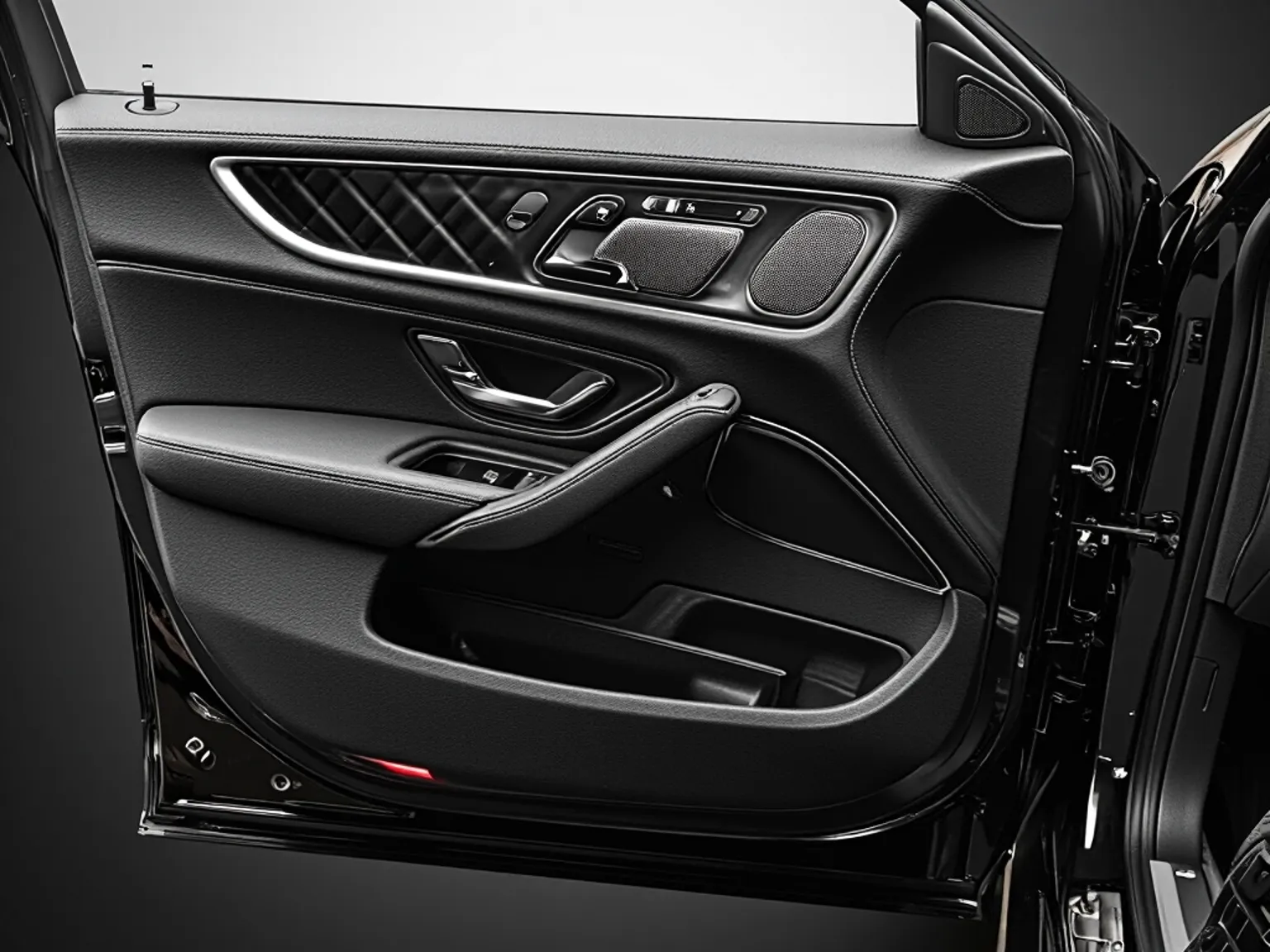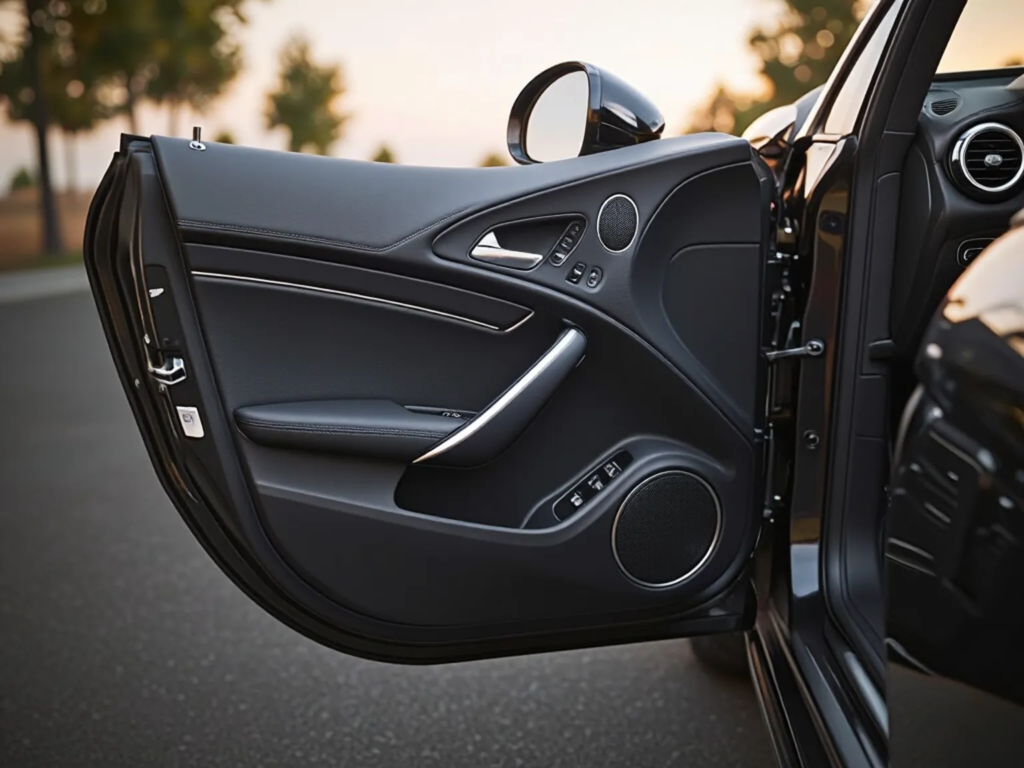
We often focus on the more prominent aspects of vehicle maintenance—engine performance, exterior paint, and seat condition—but the subtle details can significantly impact a car’s overall value and aesthetic. Door panels, those often-overlooked surfaces that line the interior of your vehicle’s doors, are subjected to daily wear and tear. Scuffs, scratches, loose fabric, and discoloration can accumulate over time, detracting from the car’s interior appeal. But did you know that damaged door panels can silently erode your car’s resale value? Today, we’ll explore how a simple door panel repair can make a world of difference, restoring both style and value to your vehicle.
Common Door Panel Issues: Recognizing the Silent Damage
Door panels endure a constant barrage of abuse, leading to a variety of issues that can compromise their appearance and functionality. Here are some common problems:
- Scratches & Scuffs: These are the most common forms of damage, often caused by shoes, bags, seatbelts, and everyday use. Scratches and scuffs can range from minor surface imperfections to deep gouges that penetrate the panel’s material.
- Loose Fabric or Trim: Over time, the adhesive that secures fabric and trim to the door panel can fail, leading to loose or detached materials. This issue is particularly prevalent in vehicles exposed to extreme temperatures, which can weaken the adhesive.
- Discoloration & Fading: Prolonged exposure to sunlight, particularly UV rays, can cause the door panel’s materials to fade and discolor. This is especially noticeable in vehicles with dark-colored interiors, where fading can create an unsightly contrast.
- Cracked or Broken Plastic: In some cases, the plastic components of the door panel can crack or break due to impact or stress. This type of damage can be difficult to repair and may require replacement of the affected part.
- Stains and Spills: Food and drink spills, as well as other liquids, can leave unsightly stains on the door panel’s fabric or vinyl surfaces.
- Wear and Tear on Armrests and Handles: High use areas, such as armrests and door handles, are prone to excessive wear. Leather and other materials can become worn, cracked, or discolored.

How We Restore Door Panels: A Detailed Process
Door panel restoration is a meticulous process that requires precision and expertise. Here’s a breakdown of the key steps involved:
- Inspection and Assessment: The first step involves a thorough inspection of the door panel to identify all areas of damage. This assessment helps determine the appropriate repair techniques and materials.
- Cleaning and Preparation: The door panel is thoroughly cleaned to remove dirt, grime, and other contaminants. This step is crucial for ensuring proper adhesion of repair materials.
- Repairing Scratches and Scuffs: Minor scratches and scuffs can be repaired using specialized sanding and refinishing techniques. Deeper gouges may require the use of fillers and other repair materials.
- Reattaching Loose Trim: Loose fabric and trim are reattached using high-quality adhesives. Technicians ensure that the materials are securely fastened and properly aligned.
- Repairing Cracked or Broken Plastic: Cracked or broken plastic components may be repaired using specialized plastic welding techniques or replaced with new parts.
- Deep Cleaning and Conditioning: The door panel is deep cleaned to remove stains and restore its original color. Conditioning agents are applied to protect the materials from future damage and enhance their appearance.
- Recoloring and Dyeing: If discoloration or fading is present, the door panel may be recolored or dyed to restore its original appearance. Color matching is crucial for achieving a seamless finish.
- Texture Matching: Many door panels have a specific texture. Professionals can replicate this texture, making the repair nearly invisible.
- Final Inspection: A final inspection is conducted to ensure that all repairs have been completed to the highest standards.
The Final Result: Fresh & Like-New!
The transformation of an Audi’s door panels serves as a compelling example of the impact of professional restoration. The “before” photos revealed door panels marred by scuffs, scratches, and loose trim. The interior looked worn and neglected, detracting from the car’s overall appeal.
The “after” photos, however, showcased door panels that looked fresh and like-new. The scuffs and scratches had vanished, replaced by a smooth, flawless surface. The loose trim had been securely reattached, and the colors had been restored to their original vibrancy. The Audi’s interior instantly looked newer and more valuable.
The Impact on Vehicle Value
Damaged door panels can significantly impact a car’s resale value. Potential buyers often scrutinize a vehicle’s interior, and worn or damaged door panels can create a negative impression.
By restoring door panels to their original condition, you can enhance your car’s aesthetic appeal and increase its resale value. A well-maintained interior demonstrates that the vehicle has been cared for, which can instill confidence in potential buyers.
Why Professional Repair Matters
While DIY door panel repair kits are available, professional repair services offer several advantages. Experienced technicians possess the expertise and specialized tools to achieve superior results. They can accurately match colors, repair complex damage, and ensure a flawless finish.
Moreover, professional repair services often provide warranties, offering peace of mind and assurance of quality. They use high-quality materials and techniques that are designed to last, ensuring that your investment pays off in the long run.
Door panel repair is an often-overlooked aspect of vehicle maintenance, but it can significantly impact a car’s aesthetic appeal and resale value. By investing in professional restoration, you can restore your car’s interior to its former glory and enhance its overall value.